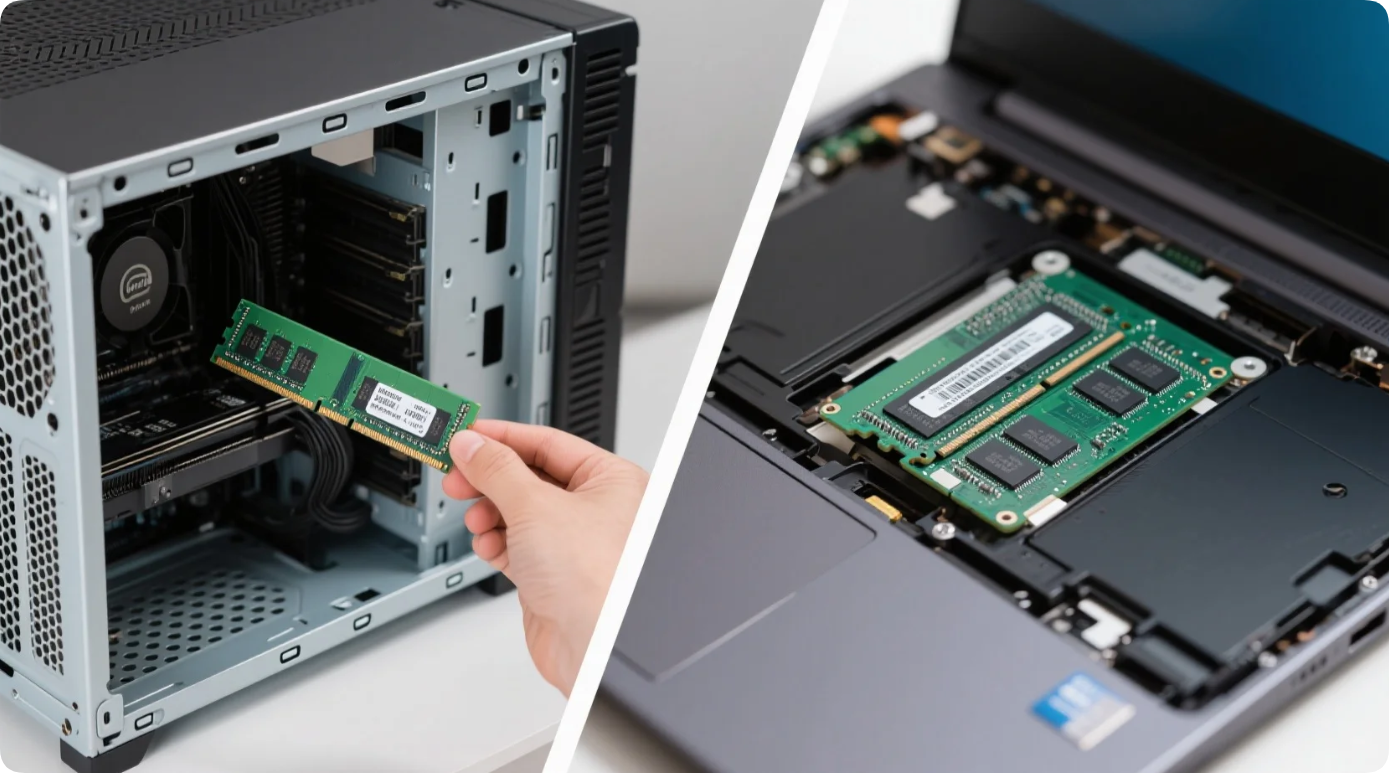Random Access Memory (RAM) has long been the unsung hero of gaming performance, quietly bridging the gap between your storage and processor. As games grow more visually stunning and mechanically complex, a pressing question looms: Will 16GB of RAM still suffice in 2025, or is it time to upgrade? Let’s explore the evolving demands of gaming, the role of RAM, and how to future-proof your setup.
RAM acts as a temporary workspace for your system, storing data that games need to access instantly—textures, character models, environmental assets, and more. Without enough RAM, your system struggles to juggle these elements, leading to stutters, frame drops, and agonizing load times.
How RAM Works with Other Components
CPU & GPU Synergy: While the GPU renders visuals and the CPU handles logic, RAM feeds both components the data they need. Slow or insufficient RAM creates bottlenecks, forcing your CPU/GPU to wait for data, which impacts performance.
Storage Interaction: Games installed on SSDs load faster, but RAM determines how much data can be kept readily available. For open-world titles like Elden Ring or Starfield, large maps and dynamic events require constant data streaming, making RAM capacity crucial.
Most modern AAA games list 16GB as the recommended RAM. Here’s a snapshot of popular titles and their requirements:
|
Game |
Minimum RAM |
Recommended RAM |
|
Cyberpunk 2077 |
12GB |
16GB |
|
Assassin’s Creed Valhalla |
8GB |
16GB |
|
Call of Duty: Warzone |
8GB |
12GB |
|
Hogwarts Legacy |
8GB |
16GB |
While 16GB meets these recommendations, newer titles like Star Wars Outlaws (2024) and GTA VI (2025) are expected to push boundaries. Open-world games, simulations, and strategy titles (Cities: Skylines II, Microsoft Flight Simulator) already strain 16GB systems due to their sprawling, dynamic environments.
Modding communities breathe life into games like Skyrim or Minecraft, but extensive mods—especially 4K texture packs—can devour RAM. For example, Red Dead Redemption 2 mods with enhanced textures may require 20GB+ of RAM for smooth operation.
Modern gaming isn’t just about playing. Streaming on Twitch, running Discord, or having Chrome tabs open (for guides or music) adds layers of RAM usage. A typical setup:
Game: 10–12GB
Chrome (10 tabs): 2–3GB
Discord/Streaming Software: 1–2GB
This easily surpasses 16GB, causing background apps to compete for resources.
Game engines like Unreal Engine 5 leverage advanced features like Nanite (micro-detailed geometry) and Lumen (dynamic lighting), which demand more memory. Early adopters of UE5 titles (Hellblade II, Avowed) may find 16GB insufficient for max settings.
Higher resolutions and graphics settings exponentially increase RAM usage:
1080p/Medium: 10–12GB
1440p/High: 12–14GB
4K/Ultra: 16GB+
Features like ray tracing, anti-aliasing, and ultra textures require rapid data access. For example, enabling ray tracing in Cyberpunk 2077 adds ~2GB of RAM usage. Gamers targeting 4K or ultrawide monitors should consider 32GB to avoid bottlenecks.
Enthusiasts: Those chasing max settings in AAA titles.
Content Creators: Streamers, video editors, or 3D artists running OBS, Premiere Pro, or Blender alongside games.
Multiplayer Gamers: Escape from Tarkov or Rust players hosting servers or running heavy mods.
A 32GB kit (e.g., 2x16GB DDR4-3600) offers headroom for both gaming and productivity, ensuring smoother multitasking and future updates.
RAM in pairs (e.g., 2x8GB instead of 1x16GB) doubles bandwidth, improving frame rates by 5–15% in CPU-bound games like CS2 or Valorant.
Speed: DDR4-3200 to DDR5-6000 is ideal. Higher speeds reduce load times and improve 1% lows (minimizing stutters).
Latency: Lower CAS latency (CL16 vs. CL18) ensures quicker data access.
Advanced users can tweak RAM timings via BIOS for extra performance. Tools like Thaiphoon Burner and DRAM Calculator simplify the process, but ensure adequate cooling to prevent instability.
16GB DDR4-3200: ~50–50–70. Perfect for 1080p gaming or budget builds.
32GB DDR4-3600: ~100–100–130. Ideal for high-refresh 1440p or entry-level 4K.
64GB+: Overkill for gaming but useful for virtualization or 8K video editing.
Prioritize RAM upgrades if you’re CPU/GPU-bottlenecked. For example, pairing an RTX 4070 with 16GB RAM is wiser than overspending on an RTX 4090 with inadequate memory.
Most gaming laptops solder RAM to the motherboard, limiting post-purchase upgrades. If buying a laptop in 2025:
16GB: Sufficient for casual gaming but risky for long-term use.
32GB: Recommended for AAA titles and multitasking.
For desktops, choose motherboards with 4 RAM slots, allowing incremental upgrades (e.g., start with 16GB, add another 16GB later).

Casual Gamers: Playing indie titles or older AAA games at 1080p? 16GB works.
Competitive Gamers: Esports titles like Apex Legends or Fortnite are optimized for lower specs.
Crave 4K/ultra settings.
Mod heavily or multitask.
Plan to keep your rig for 3+ years.
For a balanced, future-ready setup, 32GB is the new sweet spot. Pair it with a mid-to-high-tier GPU (e.g., RTX 4070 Ti) and a modern CPU (Ryzen 7 7800X3D) to maximize performance.
While 16GB remains viable for mainstream gaming in 2025, the industry’s trajectory suggests a shift toward higher requirements. Investing in 32GB today ensures smoother gameplay, better multitasking, and longevity. As always, balance your budget—allocate funds to the GPU and CPU first, but don’t let RAM become an afterthought.

Click to confirm
Cancel